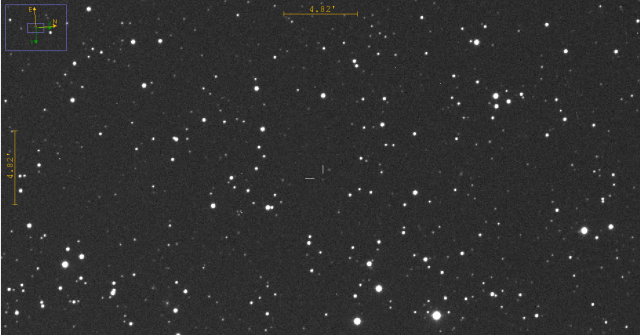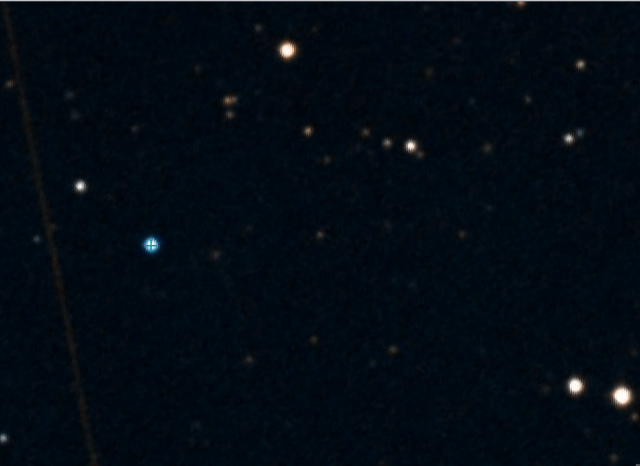› Forums › Variable Stars › IX Dra: observations requested
- This topic has 64 replies, 8 voices, and was last updated 3 years, 1 month ago by
 Jeremy Shears.
Jeremy Shears.
-
AuthorPosts
-
14 November 2020 at 4:19 pm #583365
 Jeremy ShearsParticipant
Jeremy ShearsParticipantYes, with ER UMa stars having very frequent outbursts, there’s always something to see, Stewart. Great fun!
17 November 2020 at 10:47 am #583381 Gary PoynerParticipant
Gary PoynerParticipantIX Dra is now fading from Stewarts superoutburst. Last couple of nights…
Nov 14.82 15.3 visual
Nov 16.88 15.49CV
I’ll keep going with this one I think.
Gary
17 November 2020 at 1:09 pm #583382 Stewart John BeanParticipant
Stewart John BeanParticipantSRO telescope , Arizona gave 15.3 at 1:33:8.35 UT on November 16, 2020.
Those recorded by TESS were about 10 days in duration from when the first superhumps appeared to getting back to quiescence at mag 17.
Stewart
30 November 2020 at 9:42 am #583424 Stewart John BeanParticipant
Stewart John BeanParticipantThe November superoutburst is over, a return to quiescence at mag 17 and then a rise to 15.9 has been reported by AAVSO observers.
28 December 2020 at 1:14 pm #583618 Stewart John BeanParticipant
Stewart John BeanParticipantThe next superoutburst is expected in the first half of January.
IX Dra is now quite a difficult object for the USA based AAVSOnet telescopes that I have been able to use so far, although a couple of AAVSO observers ( Sweden and Virginia, USA) do seem to have reasonable northerly aspects and continue to report. AAVSOnet SRO Arizona is out of service at this time with a failed camera.
UK observers benefit from their higher latitude compared to the USA, but IX Dra has a very low elevation at this time of year.
If anyone can help for the period from Jan 1st to Jan 15th to capture the start of the superoutburst it would be appreciated. The most likely date for the start is in the middle of the window above – with the usual uncertainties.
Stewart
1 January 2021 at 10:44 am #583625 Jeremy ShearsParticipant
Jeremy ShearsParticipantA quick reminder that we are only a few days away from the next superoutburst of IX Dra (perhaps 3 to 7 days). Hence observations are encouraged.
I had it at mag 17.1 last night (NY Eve) – just declined from the last “normal” outburst”. The next outburst could well be the super…keep watching!
2 January 2021 at 9:31 pm #583636 Jeremy ShearsParticipant
Jeremy ShearsParticipantThanks Graeme. That is helpful. Try on other evenings if you can.
2 January 2021 at 9:49 pm #583635 Graeme CoatesSpectator
Graeme CoatesSpectatorI have this somewhere around Mag 17.5-17.9 (CV) at 18:45UT this evening (2nd Jan 2021) – not a very accurate measurement as running from Spain with a small widefield refractor, and it’s already getting low at dusk – 8 oktas at home…

(This a single 10min exposure (ED80 + STF8300M)
3 January 2021 at 7:17 pm #583641 Graeme CoatesSpectator
Graeme CoatesSpectator2021-01-03 1851UT – Better conditions than yesterday (better transparency).
Mag 17.0 (CV)
6 January 2021 at 9:28 am #583659 Stewart John BeanParticipant
Stewart John BeanParticipantI am on a couple telescopes in New Mexico in few hours time. Had no luck with itel Spain owing to “roof closed”: clouded out.
Stewart
6 January 2021 at 1:49 pm #583660 Robin LeadbeaterParticipant
Robin LeadbeaterParticipantHave just been looking at where this field is so I can take a quick look with the spectrograph guider from time to time. Impressed by how bright (and blue) it appears in the DSS image
 6 January 2021 at 2:02 pm #583661
6 January 2021 at 2:02 pm #583661 Stewart John BeanParticipant
Stewart John BeanParticipantSorry Robin : DSS? I’m too new to this topic
I did get an image at 5:30am local from New Mexico and estimate V mag 17.1 +_0.33.
So we seem to observed a normal outburst at mag 16 on the 5th at 2459220.29 recorded by Graeme Coates.
Stewart
6 January 2021 at 2:34 pm #583662 Robin LeadbeaterParticipant
Robin LeadbeaterParticipantSorry this is a historical observation from the Digitized Sky Survey plates
6 January 2021 at 5:37 pm #583663 Jeremy ShearsParticipant
Jeremy ShearsParticipantI’ve just imaged IX Dra from my home obsy: mag 17.4C at 17.24 UT
7 January 2021 at 1:21 pm #583665 Stewart John BeanParticipant
Stewart John BeanParticipantT05 New Mexico gave 17.27 this morning at 2459222.01.
So still in a low state. Graeme Coates measured it at 16.0 on the 5th which may have been the peak of the last normal outburst. So that may mean another 3 days wait.
7 January 2021 at 1:37 pm #583667 Stewart John BeanParticipant
Stewart John BeanParticipantRobin , How bright does a star need to be to obtain a decent S/N ratio spectrum?
IX Dra is a bit faint perhaps, but ER Uma is brighter (V mag 13 maximum and better placed for observations ) and also approaching a superoutburst. See Discussion Forum on ER Uma and RZ Lmi.
Stewart
7 January 2021 at 8:14 pm #583668 Graeme CoatesSpectator
Graeme CoatesSpectatorI think there were some observations at 15.5 on the evening of the 4th (in the BAA dB) so probably just after peak for my one.
8 January 2021 at 12:34 pm #583669 Stewart John BeanParticipant
Stewart John BeanParticipantLooking at the last superoutburst graph ( up this forum on Jan 12th ), I see that there was quite a gap between the last normal and the normal outburst that led to the superoutburst. Immediately after a superoutburst the normals come every 3 – 4 days. Later they seem to be separated by 5-6 days. In the graph on the 12th Jan, it seems that there was a 7 day separation between the last two normals.
On this basis the next normal might be on the 12th. This one might trigger the superoutburst. If so it will be 5 days late relative to the recent long term average.
9 January 2021 at 6:37 pm #583673 Jeremy ShearsParticipant
Jeremy ShearsParticipantJan 9.771 Mag 15.7 C
looks like a new outburst
9 January 2021 at 10:41 pm #583675 Nick JamesParticipant
Nick JamesParticipantJust checked my images taken earlier this evening in thick fog. I get 15.4 (unfiltered vs Gaia DR2 G) at Jan 9.73 so it does look like an outburst. Image quality was rubbish though due to the fog. The last decent image I have of the field was Jan 6.73 when it was 17.08.
-
AuthorPosts
- You must be logged in to reply to this topic.
